Ceiling fans are an energy-saving, cost-effective way to cool down a room and keep your house comfortable all year round. It is a very popular choice and still not outdated. But how long do they last? If you’re in the market for a new ceiling fan, or if you’ve just installed one, then this article is for you. We’ll explore the factors that affect a ceiling fan’s lifespan and provide tips on how to extend the life of your fan. Read on to find out how long your ceiling fan can last and what you can do to make sure it runs smoothly for years to come.
Contents
Ceiling fans come in many shapes, sizes, and styles – from traditional models to modern designs – so it can be difficult to pinpoint an exact lifespan. However, with proper maintenance and care, most ceiling fans have the potential to last anywhere from five to fifteen years. This range depends on several factors such as quality of materials used in construction, motor power and speed settings, as well as environmental conditions like humidity levels.

In addition to these factors affecting longevity, user behavior also plays a role in how long your ceiling fan will last. Taking good care of your fan through regular cleaning sessions will help extend its life considerably. With these tips in mind, you can ensure that your new ceiling fan continues running efficiently for many years!
The Lifespan Of An Average Ceiling Fan
Ceiling fans are generally considered to be long-lasting appliances. The average lifespan of an ordinary ceiling fan is estimated to be around 10-15 years, depending on the quality of the fan and how often it is used.
The materials used in the manufacture of ceiling fans will also have an impact on its longevity. Fans built with higher-quality material and stronger components tend to last longer than those made with cheaper parts. Ceiling fans that are exposed to weather elements, such as rain or snow, can corrode over time and may not last as long as indoor fans.
Regular maintenance is key for keeping a ceiling fan running smoothly for many years. Cleaning the blades occasionally, ensuring that all nuts and bolts remain secure, and lubricating the motor regularly can extend its life significantly. With proper upkeep, a ceiling fan can easily last over 15 years.
Average Ceiling Fan Warranty Period
The average lifespan of a ceiling fan is 10-15 years. But this doesn’t mean that it will necessarily last that long. In fact, the warranty period for a ceiling fan may be much shorter than its expected lifespan. Therefore, it’s important to understand what kind of warranty comes with the fan you purchase and what kind of coverage it provides.
Most ceiling fans come with a manufacturer’s warranty which covers any defects or problems that occur during the normal use of the product, such as motor failure or other malfunctions. The duration of this warranty can vary from one manufacturer to another and may even depend on the type of fan you buy. Some warranties may cover parts for up to five years, while others may only cover them up to two years.
It’s always a good idea to read through your warranty carefully before making a purchase so you know exactly what kind of coverage it includes and how long it will last. In addition, many manufacturers offer extended warranties which can provide additional coverage beyond the original manufacturer’s warranty.
Factors Influencing How Long Ceiling Fans Last
There are several factors that can influence how long a ceiling fan will last. Here are some of the most important ones:
Overall, the lifespan of a ceiling fan can vary widely depending on these and other factors. With proper care and maintenance, a high-quality fan installed in a suitable environment could last for many years.
How To Maintain A Ceiling Fan Properly?
Here are some tips for maintaining a ceiling fan properly:
- Turn off the power: Before starting any maintenance tasks, make sure to turn off the power to the ceiling fan at the circuit breaker.
- Dust the blades: Use a soft, lint-free cloth or a ceiling fan duster to clean the blades of the fan. Avoid using abrasive materials that could scratch the blades.
- Clean the motor housing: Use a soft brush or vacuum attachment to remove dust and debris from the motor housing. Avoid using water or other liquids to clean the motor.
- Lubricate the motor: Apply a few drops of lubricating oil to the motor bearings every six months to keep the motor running smoothly.
- Tighten loose screws: Check the screws and bolts that hold the blades and motor housing in place and tighten any that are loose.
- Check the balance: Use a balancing kit to check if the fan blades are balanced. Adjust any imbalances by adding weight to the blades or using a balancing kit.
- Replace any damaged parts: If you notice any damaged or worn parts, such as cracked blades or a damaged motor, replace them immediately.
- Check the wiring: If you notice any frayed or damaged wiring, have a qualified electrician repair it.
By following these maintenance tips, you can keep your ceiling fan running smoothly and extend its lifespan.
When Should You Replace A Ceiling Fan?
The average lifespan of a ceiling fan is about 10 years. However, there are many factors that can affect the longevity of your fan. It is important to keep an eye on wear and tear and make sure you replace any broken parts as soon as possible. This will help extend the life of your fan and ensure it continues to operate properly.
- You should regularly dust off your ceiling fan blades and check for rust or damage to the motor. If the motor begins to show signs of corrosion or other damage, it is time to replace it.
- You should also make sure the blades are securely attached and that all electrical connections are secure.
- If you notice any strange noises coming from your ceiling fan, or if it starts to wobble or vibrate more than usual, it may be time for a replacement.
- Additionally, if you want to change up the look of your room but don’t want to completely replace your fan, consider updating with a new light kit or blade set.
Keeping up with regular maintenance and replacing parts when necessary will help ensure that your ceiling fan lasts for years to come.
Conclusion
In conclusion, ceiling fans can be a great addition to any home, but it’s important to know how long they last. On average, most ceiling fans last between eight and fifteen years. However, this number can vary depending on the quality of the fan and how often you maintain it.
With proper care and maintenance, you can extend the lifespan of your ceiling fan significantly. If you find that your fan is nearing the end of its life expectancy or has sustained any damage, it’s important to replace it so that you can continue to enjoy its cooling benefits safely. So don’t wait too long – take some time to inspect your ceiling fan regularly and ensure that it’s running in peak condition for years to come!

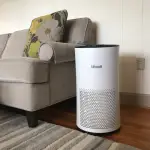
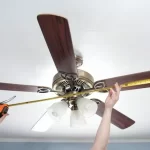
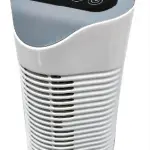



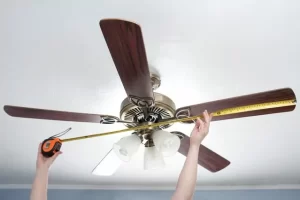
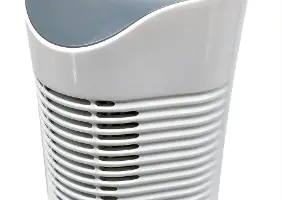

Add Comment